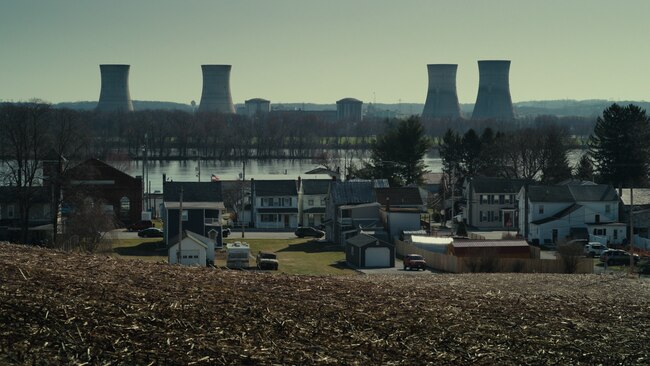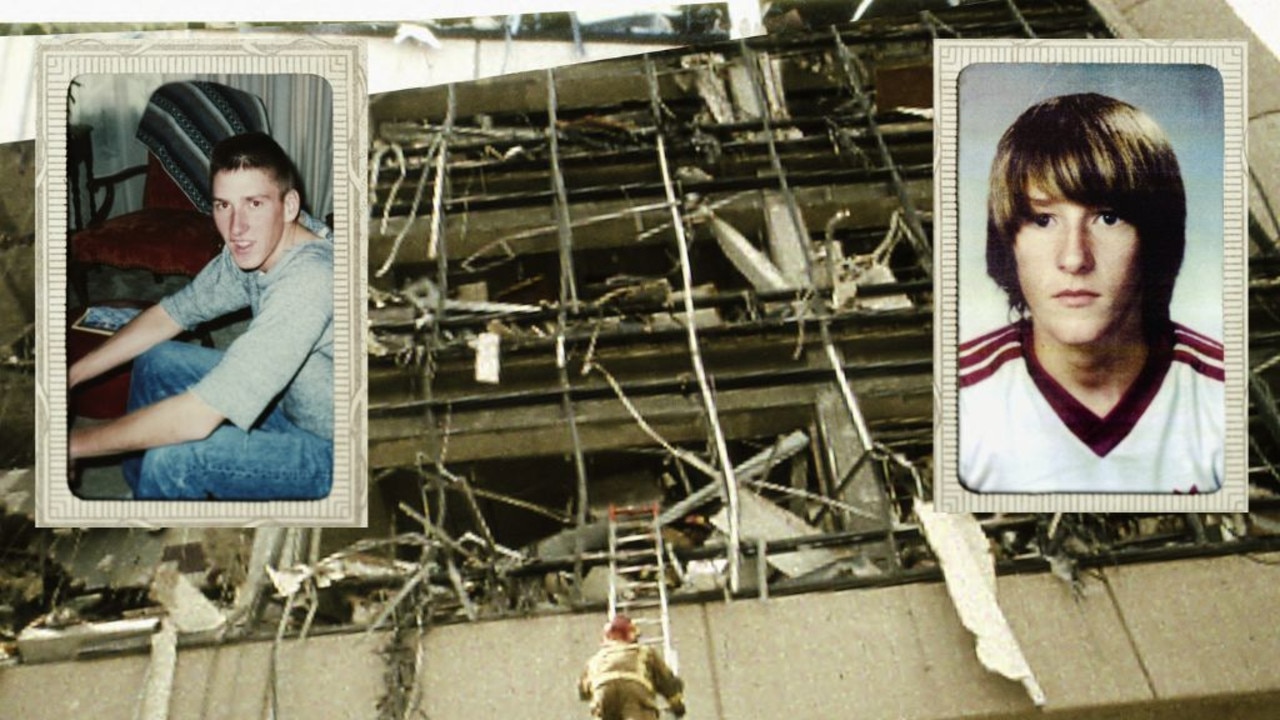Nuclear disaster that never was: Three Mile Island is must-watch TV
Meltdown: Three Mile Island is a documentary series about the worst nuclear accident in US history – with a death and injury toll of zero.

It would seem nuclear power is something that most of us are afraid of, even if that little atom can provide a huge amount of power from a small raw material input, with minimal environmental disturbance. It’s the image of that fearful mushroom cloud that frightens us, and possibly the countless representations of James Bond-like villains in popular culture along with the proliferation of thrillers involving thefts of nuclear materials and the development of so-called “dirty bombs” made from stolen plutonium.
Then again, the message that comes through from the experts hasn’t helped. The technology always seems scary and intimidating and the regulatory regimes simply are not tight enough. The accidents terrify us. With each one – Chernobyl, Fukushima and Three Mile Island – we expected the consequences to be dire and tragic, even though so far, somewhat paradoxically, nuclear energy resulted in far fewer deaths than anyone might have imagined.
As the new Netflix documentary series Meltdown: Three Mile Island — the story of the worst nuclear accident in US history — shows, there was a death and injury toll of zero. The radiation exposure to the public was slight and the short half-life radioactive gas that was released the first day quickly dissipated. But it was an alarming and distressing near miss and as the series reveals. The corporate obfuscation and confusion in a series of cover-ups in the repair of the facility greatly eroded public trust in nuclear power.
It started about 4am on Wednesday, March 28, 1979 at the nuclear power towering plant on the Susquehanna River, southeast of Harrisburg, Pennsylvania. It was a time when fuel was running short, the US was dependent on foreign oil, and nuclear seemed the answer to politicians’ dreams. Then a pump failed in the secondary cooling loop of Reactor Unit 2, which came less than half-an-hour from fully melting down and causing terrible damage to hundreds of thousands of residents in the nearby town.
Like Craig Mazin’s fictionalised series Chernobyl, which so compellingly looked at the shortcomings and deficiencies of the Soviet system, and the unique set of unsolvable problems that system created, Meltdown explores the American disaster and how it occurred, the humanity of those who responded, and the people whose lives were so affected. But it’s also about the importance of truth in a story that was full of deception and dishonesty.
The four-part series comes from Academy Award-nominated director Kief Davidson, in collaboration with Erin Brockovich producers Michael and Carla Shamberg and Davidson’s Moxie Pictures – creatives who are no strangers at using film to dig for the truth. Davidson has been making award-winning documentaries for almost two decades for Discovery Channel, ABC News PBS, ARTE and A&E, and for Netflix, beginning with Who Shot the Sheriff, his account of the mystery behind the assassination attempt on Bob Marley in 1976. Davidson’s The Ivory Game follows undercover intelligence operatives in Africa, Asia and Europe who oppose ivory cartels, as well as the rangers and activists who fight for the species’ survival at the ground level. It also launched globally as a Netflix Original and was shortlisted for an Academy Award.
And Meltdown is another compelling, expensive, thoughtful series about a painful subject, which, like so many of the newly commissioned Netflix documentaries, epitomises that shift to a more “filmic” style of presentation, as, say, in the work of Joe Berenger. The idea is to create an entertaining cinematic experience as the filmmakers develop a coherent narrative from fragments and telling details, orchestrating shifts in perspective, going down rabbit holes as they evaluate the evidence they discover.

Like an investigative journalist, these filmmakers are looking at stories in the public interest. They are advocates for change, parsing cases from many angles and using many different aesthetic genres. They’ve made documentaries more popular by making them like feature films, with all the qualities of narrative cinema. “A film is a thousand subjective decisions,” Berenger says. “So if a documentary is as subjective as a feature film, then why can’t you use all the good qualities of narrative filmmaking to make your film cinematically satisfying?”
Davidson’s series looks initially, in the first two episodes, at the way this accident evolved, the five-day red alert during which a full-on nuclear meltdown seemed possible. The final two centre on those tasked with the billion-dollar clean-up of the molten reactor by its owner, Metropolitan Edison, and supervised by the government’s Nuclear Regulatory Commission. The second part also tells the story of whistleblower Rick Parks, a highly experienced clean-up supervisor trained by the US navy and hired by the Bechtel Corp – at the time the largest private construction company in the world – who moved his family to Middletown, Pennsylvania for the job of stabilising the situation and preventing further leaks.
“I tend to do mainly character-driven films,” Davidson says. “So I was looking at who the potential main character would be in it. Within the first 10 minutes of talking with Rick Parks, I knew that I wanted to make the series. He struck me as a larger-than-life person who was incredibly brave for what he’s done. Very few people know anything about what happened after the actual accident, after that five-year period, what happened in the clean-up phase that Rick Parks was very much a part of, and the potential catastrophe that the East Coast narrowly avoided. There was a real opportunity for an untold story of Three Mile Island that extended past the actual accident.”
There were unusual problems involved in dismantling the highly radioactive components of the damaged plant. Parks was particularly concerned about hasty repairs to a crane that lifted the head off the reactor to expose the core; if it malfunctioned, it could drop its load onto the core and cause a major radioactive leak. Parks, who found himself in disagreement with his various superiors and was concerned at the efficacy of any of the safety checks and precautionary tests, was subjected to egregious personal attacks and eventually forced out of the operation. But not before taking his records to the Government Accountability Project.
“I set out to have a four-episode arc that felt like there was a ticking time bomb that was about to go off,” Davidson says.
“When you watch those first two episodes, it was a five-day, very intense period where the accident happens, and it’s all the evacuation, it feels like a very tense thriller. And just as the problem is solved at the end of episode two, we restart that ticking time bomb clock again with Rick Parks’s story.”
The first episode – The Accident – certainly rockets along, despite some complex technology having to be explained, which Davidson does wittily with diagrams, graphics and moving models showing just how valves, pumps, and gauges started to fail and malfunction.
“We had dozens and dozens of pages of references of what each switch did, how everything worked, what lit up and what types of sounds there were. We had experts that have worked in control rooms to verify that we were correct.” He uses empathetic interviews with residents and nuclear experts, and clever archival footage, a great deal of it from news accounts of the accident. He also makes good use of TV commercials from the period, and even cartoons.
And then there are comprehensive re-enactments, shot in such a way as to be indistinguishable from actual footage, by cinematographers Luca Del Puppo and David Wilson using a huge cast of players and a massive set. “I’ve never done a project where so much time and research has gone into the re-creations, because it was important for me to have everything as accurate as humanly possible,” he says. “I was looking for re-creations to be used as a story driver to help us emotionally tie the audience to what happened. And it was very important for me to see people’s faces in this and find characters that looked and felt like the actual characters we were portraying. We also use the re-creations to illustrate that what people thought is not exactly what happened. It plays a hand in that creatively.”
He introduces Parks early. He is bearded and intent and has something of Woody Harrelson about him. With a gravelly voice, he is the kind of guy you want around when things go pear-shaped. And it sure does, exacerbated by an uncanny coincidence. The disaster movie, The China Syndrome, had been released only 12 days earlier. It was based on the idea that if a reactor’s core is exposed, the fuel heats beyond core heat and melts down through the containment floor, all the way to China. Clouds of radioactivity would render an area of Pennsylvania uninhabitable.
The series is a fast-moving, expertly produced piece of work. Davidson works all the parts together with a well-organised snap. There are lessons in this documentary, he says, and the way it shows how small acts of bravery can change the course of history. “We need to learn from the Three Mile Island disaster as we face the current climate and energy crisis.”
Meltdown: Three Mile Island streaming on Netflix.




To join the conversation, please log in. Don't have an account? Register
Join the conversation, you are commenting as Logout